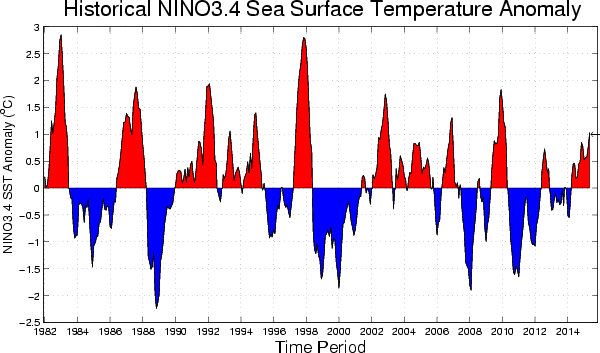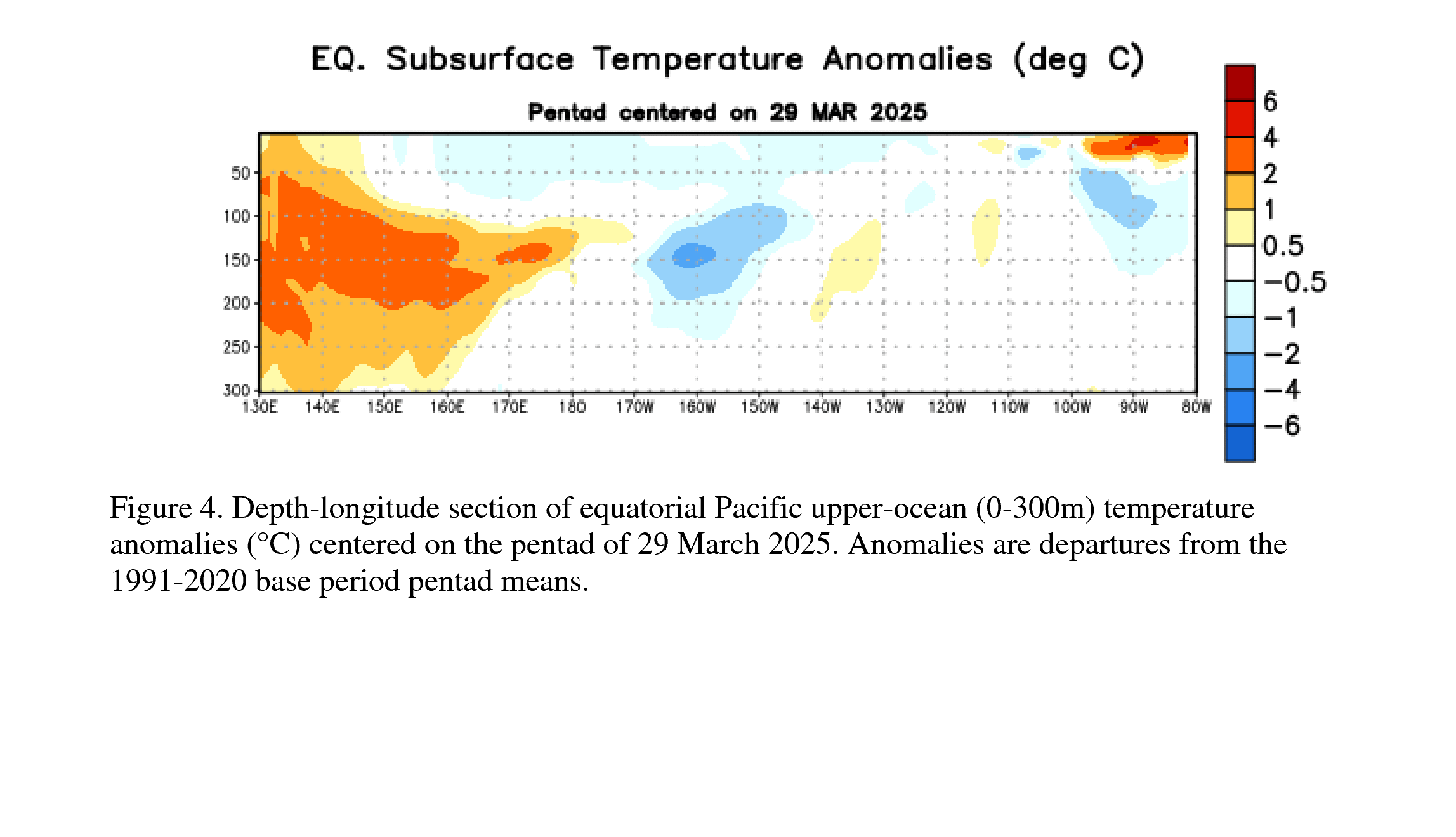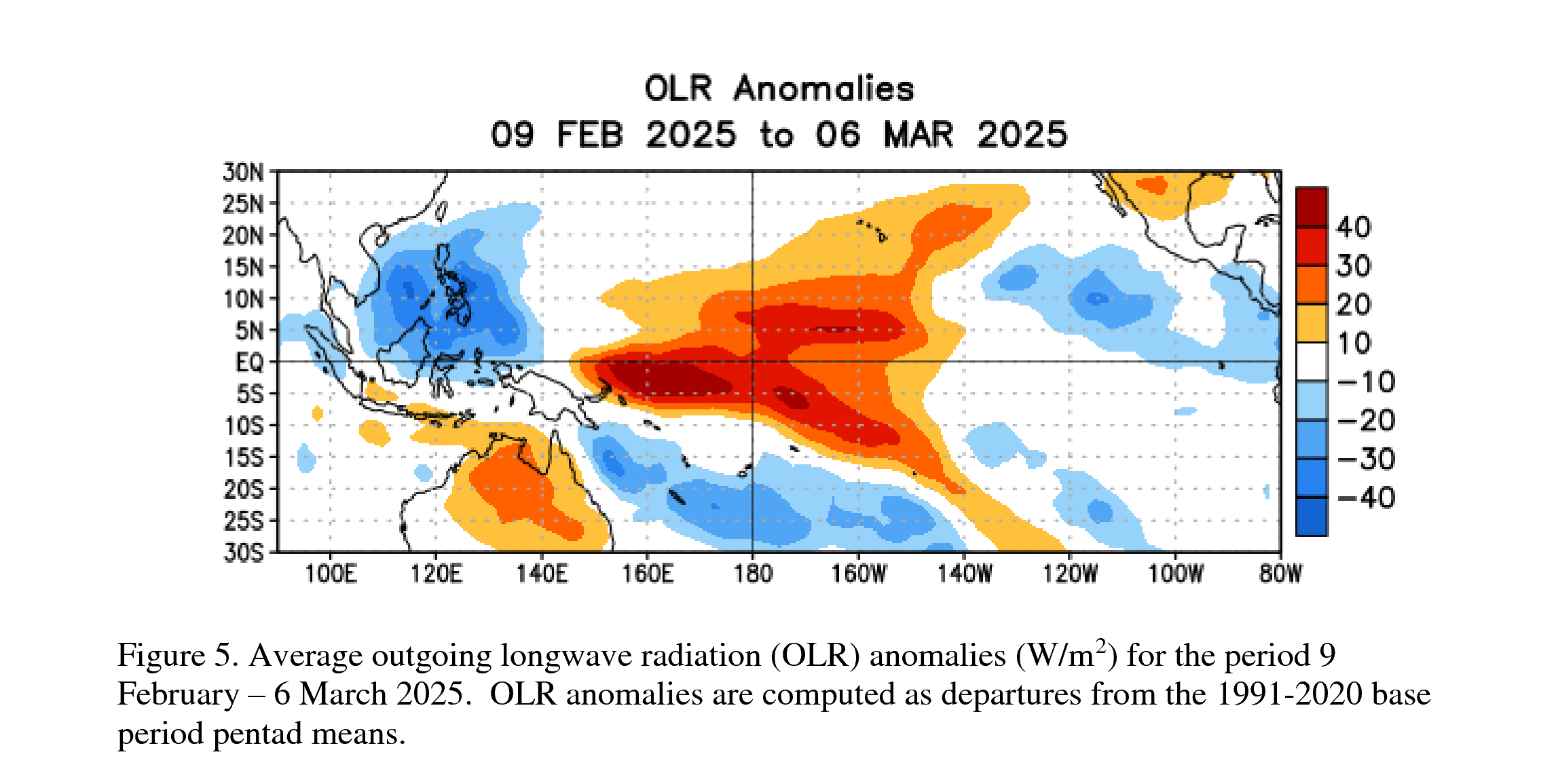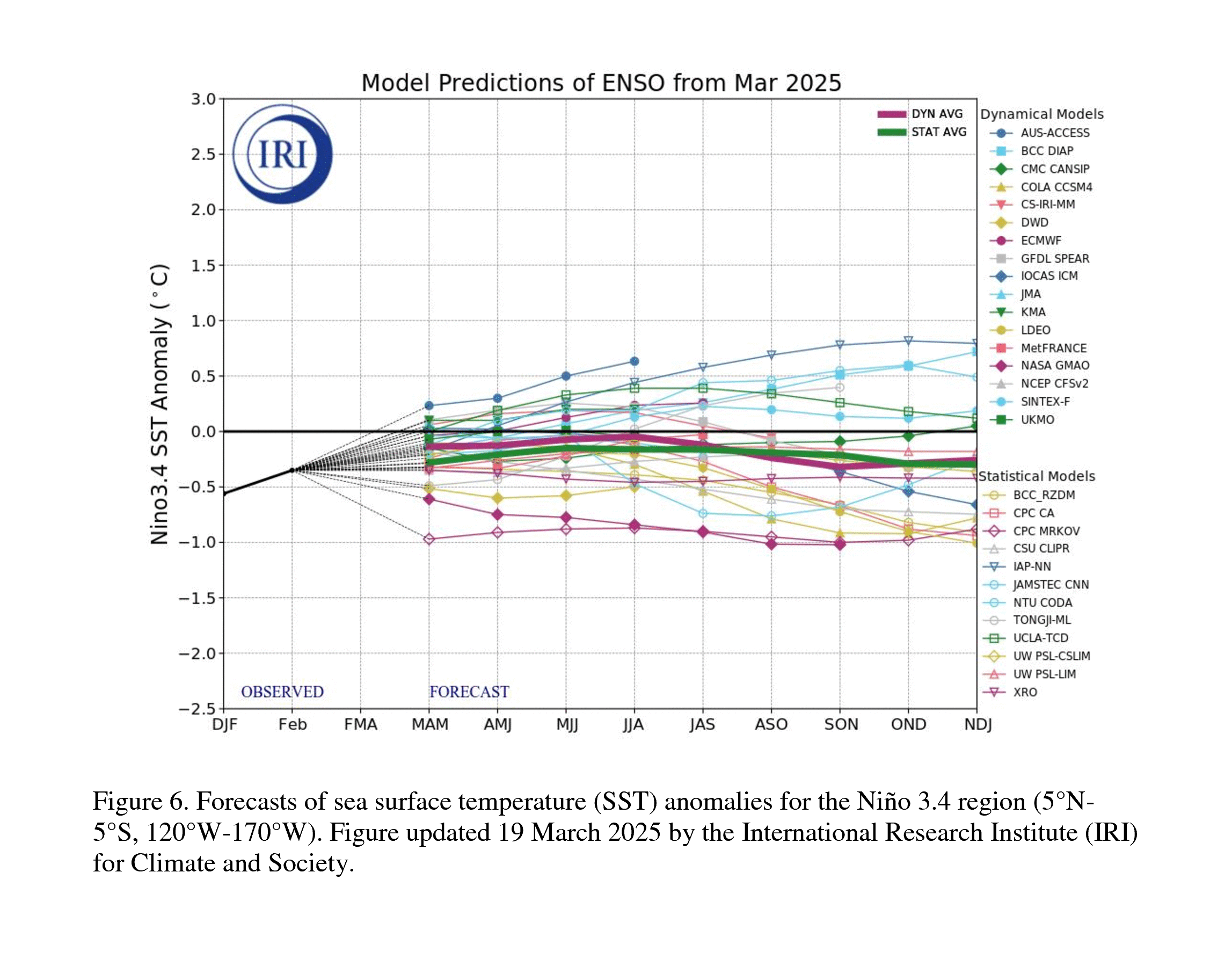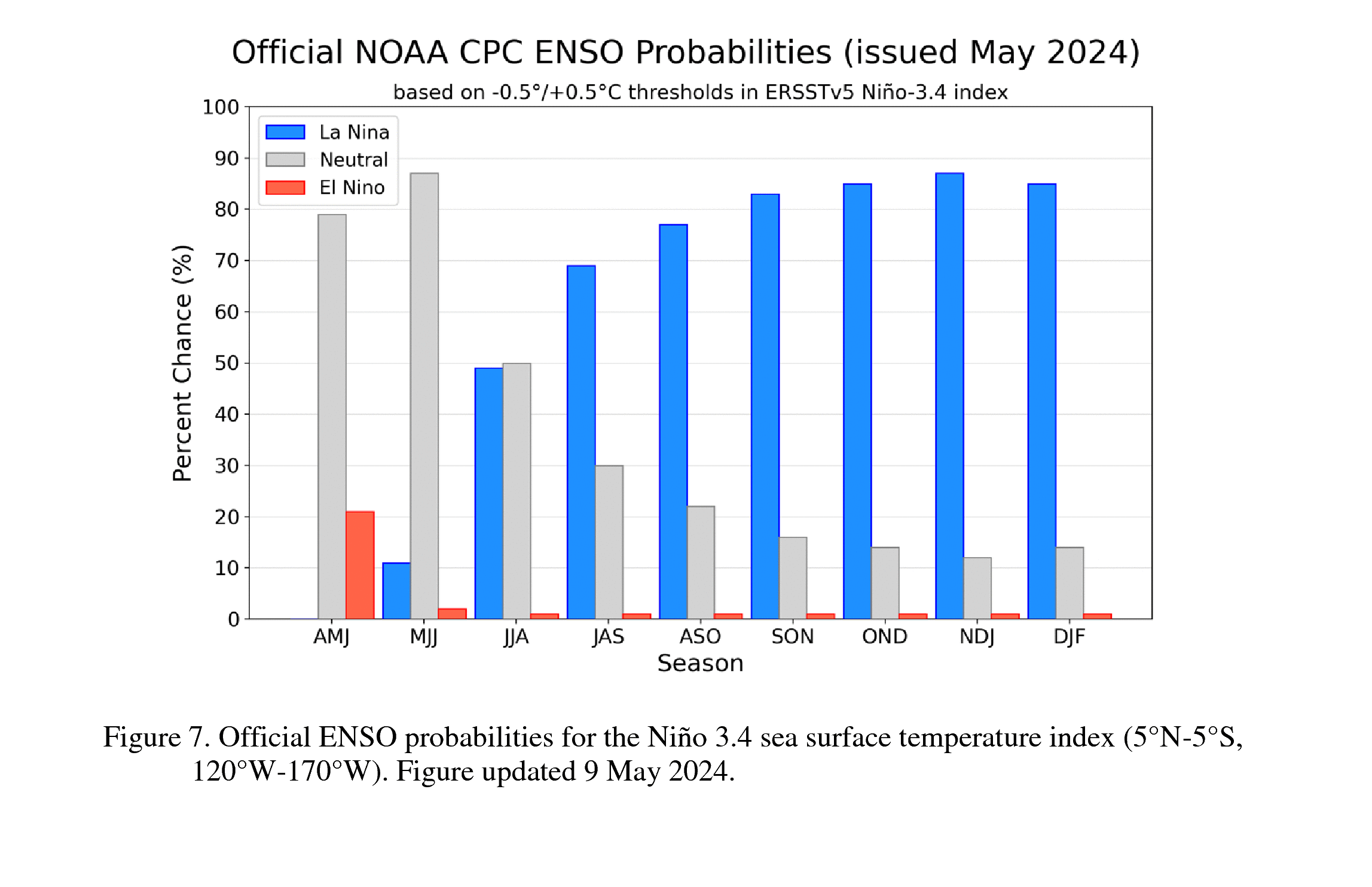IRI ENSO Forecast
IRI Technical ENSO Update
Published: June 18, 2015
Recent and Current Conditions
The SST anomaly in the NINO3.4 region was at a weak El Niño level from late February through mid-May 2015, when it increased to moderate strength. For May the average NINO3.4 SST anomaly was 1.03 C, indicative of minimally moderate Niño conditions, and for Mar-May it was 0.80 C. The IRI’s definition of El Niño, like NOAA/Climate Prediction Center’s, requires that the SST anomaly in the Nino3.4 region (5S-5N; 170W-120W) exceed 0.5 C. Similarly, for La Niña, the anomaly must be -0.5 C or less. The climatological probabilities for La Niña, neutral, and El Niño conditions vary seasonally, and are shown in a table at the bottom of this page for each 3-month season. The most recent weekly SST anomaly in the Nino3.4 region was 1.3 C, in the category of moderate El Niño. Accompanying this SST has been an El Niño atmospheric pattern, including westerly low-level wind anomalies and positive anomalies of convection east of the dateline. The Southern Oscillation Index (SOI) and the equatorial SOI have also been indicative of El Niño conditions on average, but with large intraseasonal variations.
Expected Conditions
What is the outlook for the ENSO status going forward? The most recent official diagnosis and outlook was issued just one week ago in the NOAA/Climate Prediction Center ENSO Diagnostic Discussion, produced jointly by CPC and IRI; it called for a greater than 90% likelihood for El Niño conditions continuing through autumn 2015, and about 85% to last through through winter 2015-16. The latest set of model ENSO predictions, from mid-Jun, now available in the IRI/CPC ENSO prediction plume, is discussed below. Currently, Nino3.4 SST anomalies are in the moderate El Niño cagtegory. Subsurface temperature anomalies across the eastern equatorial Pacific have been well above average levels during the past 4 months as the downwelling phases of two general Kelvin waves (one in the earlier months this year, and one in the more recent month or two) have moved eastward at depth in response to westerly low-level wind anomalies over the course of the last 4 to 5 months. The positive heat content anomaly has promoted increases in SST over the last month, and is likely to lead to further SST increases in the coming months, depending on the strength and nature of the atmospheric response to the El Niño. The subsurface heat content, after just a slight decrease last month, returned to a quite substantially above average level. In the atmosphere, the basin-wide sea level pressure anomaly pattern (e.g. the SOI) has been at El Niño levels, but has shown large intraseasonal variation and is currently less strong that it was just several weeks ago. Anomalous convection (as measured by OLR) has been above average both near the dateline and, in the last month or two, more to the east of the dateline. Together, the oceanic and atmospheric features reflect moderate El Niño conditions for late May and through mid-June.
As of mid-June, none of the dynamical or statistical models models predicts La Niña or neutral SST conditions for the initial Jun-Aug 2015 season; 100% predicts El Niño conditions. At lead times of 3 or more months into the future, statistical and dynamical models that incorporate information about the ocean’s observed subsurface thermal structure generally exhibit higher predictive skill than those that do not. For the Sep-Nov 2015 season, among models that do use subsurface temperature information, 100% predicts El Niño SST conditions, while none predicts ENSO-neutral conditions and none predicts La Niña conditions. For all model types, the probabilities for El Niño are 100% for Jul-Sep through Oct-Dec, dropping to about 95% during northern winter 2015-16 and about 75% for the final period of Feb-Apr 2016. No models predict La Niña conditions for any forecast period during 2015 and early 2016. Chances for neutral ENSO conditions is 0% through Oct-Dec, about 5% for Dec-Feb and Jan-Mar 2016, and about 25% for Feb-Apr 2016.
Note – Only models that produce a new ENSO prediction every month are included in the above statement.
Caution is advised in interpreting the distribution of model predictions as the actual probabilities. At longer leads, the skill of the models degrades, and skill uncertainty must be convolved with the uncertainties from initial conditions and differing model physics, leading to more climatological probabilities in the long-lead ENSO Outlook than might be suggested by the suite of models. Furthermore, the expected skill of one model versus another has not been established using uniform validation procedures, which may cause a difference in the true probability distribution from that taken verbatim from the raw model predictions.
An alternative way to assess the probabilities of the three possible ENSO conditions is more quantitatively precise and less vulnerable to sampling errors than the categorical tallying method used above. This alternative method uses the mean of the predictions of all models on the plume, equally weighted, and constructs a standard error function centered on that mean. The standard error is Gaussian in shape, and has its width determined by an estimate of overall expected model skill for the season of the year and the lead time. Higher skill results in a relatively narrower error distribution, while low skill results in an error distribution with width approaching that of the historical observed distribution. This method shows probabilities for La Niña at 1% or less for all periods from Jun-Aug through Feb-Apr 2016. Model probabilities for neutral ENSO conditions are 5% or less through Aug-Oct 2015, 6-10% for Sep-Nov through Dec-Feb 2015-16, and 11-15% for Jan-Mar and Feb-Apr 2016. Probabilities for El Niño are 95% or higher from Jun-Aug to Aug-Oct, 90-94% from Sep-Nov to Dec-Feb 2015-16, and 85-89% for Jan-Mar and Feb-Apr 2016. A plot of the probabilities generated from this most recent IRI/CPC ENSO prediction plume using the multi-model mean and the Gaussian standard error method summarizes the model consensus out to about 10 months into the future. The same cautions mentioned above for the distributional count of model predictions apply to this Gaussian standard error method of inferring probabilities, due to differing model biases and skills. In particular, this approach considers only the mean of the predictions, and not the total range across the models, nor the ensemble range within individual models.
The probabilities derived from the models on the IRI/CPC plume describe, on average, very high certainty for El Niño conditions for the Jun-Aug through Dec-Feb 2015-16 seasons, and still fairly high certainty through Feb-Apr 2016. In terms of magnitude, the models suggest strengthening El Niño conditions through northern autumn season, peaking at least at moderate strength and quite possibly strong strength. However, model spread is still moderate, although less wide than it was one month ago. A caution regarding this latest set of model-based ENSO plume predictions, is that factors such as known specific model biases and recent changes that the models may have missed will be taken into account in the next official outlook to be generated and issued in early March by CPC and IRI, which will include some human judgement in combination with the model guidance.
Climatological Probabilities
| Season |
La Niña |
Neutral |
El Niño |
| DJF |
37% |
28% |
35% |
| JFM |
34% |
37% |
29% |
| FMA |
30% |
48% |
22% |
| MAM |
26% |
54% |
20% |
| AMJ |
24% |
54% |
22% |
| MJJ |
25% |
51% |
24% |
| JJA |
25% |
50% |
25% |
| JAS |
27% |
46% |
27% |
| ASO |
29% |
40% |
31% |
| SON |
32% |
34% |
34% |
| OND |
34% |
31% |
35% |
| NDJ |
37% |
27% |
36% |

IRI/CPC Mid-Month Plume-Based ENSO Forecast Probabilities
| Season |
La Niña |
Neutral |
El Niño |
| JJA 2015 |
~0% |
1% |
99% |
| JAS 2015 |
~0% |
3% |
97% |
| ASO 2015 |
~0% |
5% |
95% |
| SON 2015 |
~0% |
6% |
94% |
| OND 2015 |
~0% |
8% |
92% |
| NDJ 2015 |
1% |
9% |
90% |
| DJF 2015 |
~0% |
9% |
91% |
| JFM 2016 |
~0% |
12% |
88% |
| FMA 2016 |
~0% |
14% |
86% |



